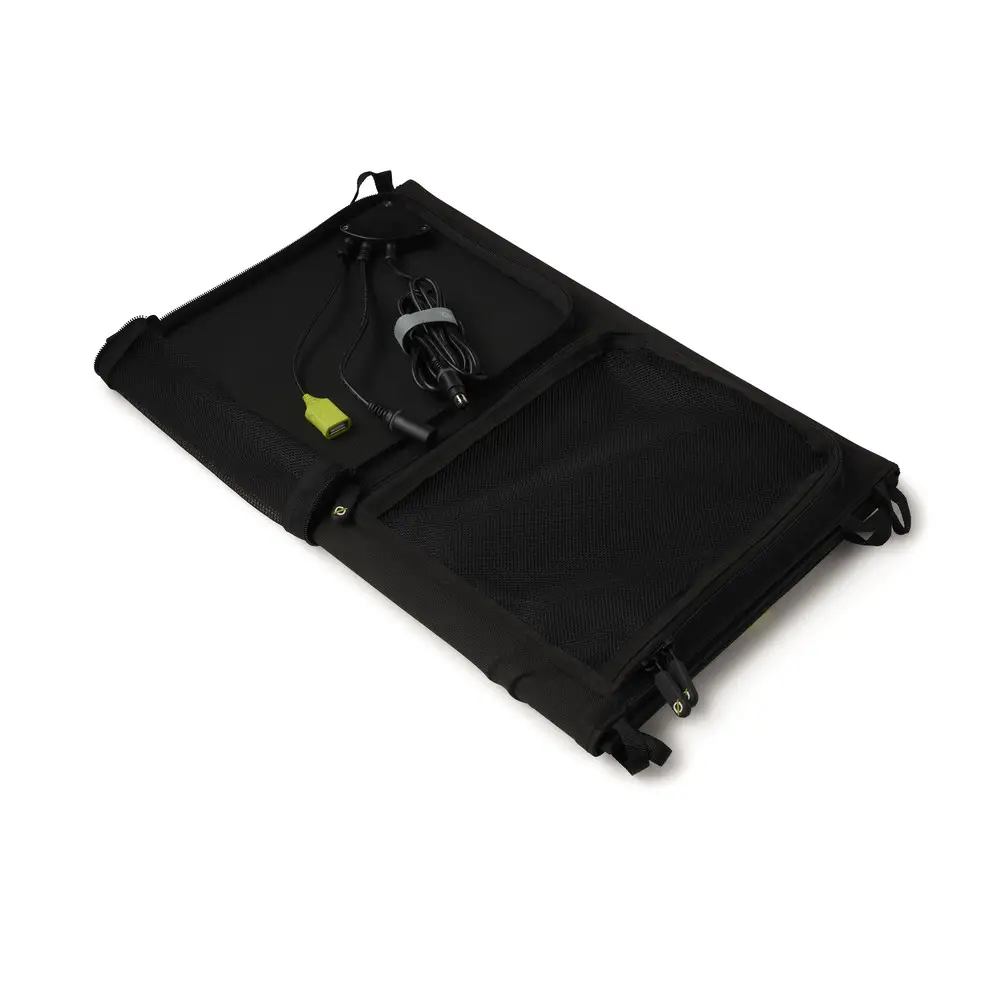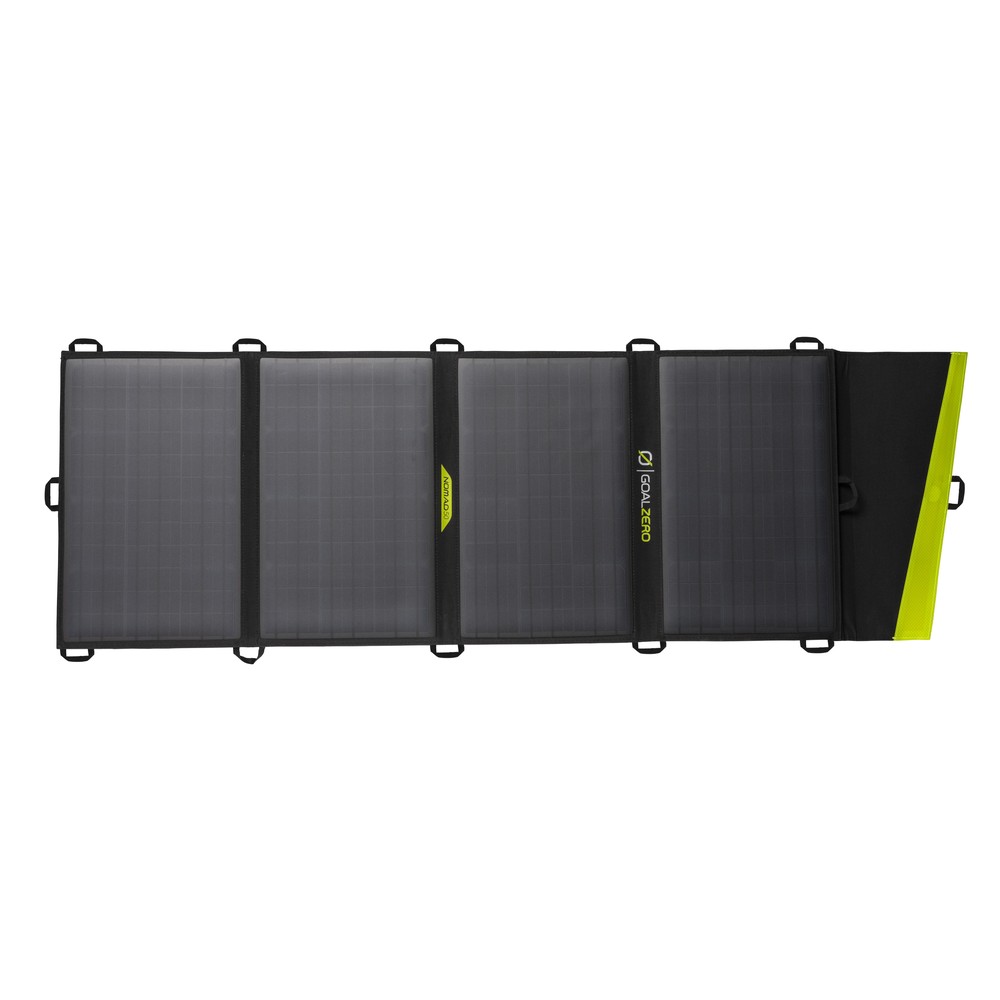A few days back when I reviewed the new Goal Zero Yeti 500X portable power station, I mentioned that I also got my hands on the new Goal Zero Nomad 50 solar panel too. I promised a review was forthcoming, and now, just a few days later, I’m making good on that promise.
Goal Zero Nomad 50 solar panel
As you’ll see, just as I was a big fan of the Yeti 500X, I’m a big fan of the Nomad 50 too. In fact, it just might be the best solar panel I’ve used when you take into account its size, weight, and other factors.
At its core, the Nomad 50 is a four-panel solar charger that has been built for use in the outdoors. As you would expect from Goal Zero, the product is very rugged and durable, which makes it well suited for use at the campsite, in the backcountry, or anywhere else you need an option to generate power.
Rugged Build Quality
Unlike some other solar panels made by other companies, this one feels incredibly solid in your hands and durable enough to withstand plenty of punishment. That comes at a bit of a cost, however, as the Nomad 50 does weigh in at 6.85 pounds (3.1 kg). That makes it a bit on the heavy side for use while backpacking, although it is a perfect set-up in a base camp scenario.
When all four solar panels are unfolded and exposed to the sun, the Nomad 50 is capable of producing up to 50 watts of power. That’s fairly substantial, although anyone who has ever used a portable solar panel like this one knows that it takes nearly perfect conditions to come anywhere close to generating that much wattage.
Extremely Efficient
Cloud cover, angle of the sun, the shade cast on the solar panels, and other variables can have a direct impact on how efficiently the panel functions. All of that said, the monocrystalline panels that are used on this particular model are amongst the most high quality and efficient that I’ve seen.
Indirect sunlight can really provide a steady stream of energy. And while that level of power might drop off some when conditions change, the Nomad 50 still performs well above similar panels from the competition.

One of the nice features of this solar panel is that it comes with built-in cables that make it compatible with Goal Zero’s line of portable power stations and larger battery packs.
That means that you don’t have to worry about bringing additional cables along. And since GZ’s cables have practically become an industry standard, the panel will work directly with a number of power stations from other manufacturers too.
This is a nice level of convenience that may seem small but is well appreciated when you’re loading up to head out into the field.
Onboard USB Port
The Nomad 50 also comes with an onboard USB port that allows users to plug devices or small battery packs directly into it for a quick charge. This seems like a no brainer, but you’d be surprised how many midsized solar panels don’t come equipped with a USB port, forcing you to only use them with a power station of some sort.
The port on the Nomad 50 is a standard USB-A model, where I wouldn’t have minded seeing a USB-C version instead. But considering the universal compatibility that comes with the older version of the port, I completely understand why Goal Zero went that direction.
Real World Results: How did it Perform?
When operating at its full efficiency—meaning good, direct sunlight—the Nomad 50 recharged my iPhone 11 Pro in less than two hours.
It can also charge smaller battery packs relatively quickly too, although the Yeti 500X’s substantially larger battery requires about 12 hours or so to replenish fully. Again, those numbers can vary depending on conditions, but they do give you a sense of how well the solar panel operates.
My Final Thoughts
Other than that, there isn’t much else to say about the Nomad 50. It is a simple, efficient, and incredibly well made solar panel with all of the features you could as for.
That includes hanging loops to connect it to the top of a tent or vehicle and a built-in case that provides excellent protection when the Nomad is folded down for storage or transport.
Goal Zero has even made it possible to daisy-chain multiple Nomad solar panels together to increase their productivity, which is again not something you see in many similar products.
The Goal Zero Nomad 50 is on the more expensive side when it comes to 50-watt solar panels. But the same thing I said about the Yeti 500X power station applies here.
There is a reason why this model is more expensive than most of the competition. It is simply better built, more durable, more efficient, and comes with more features. Most consumers will probably be perfectly okay with one of the other brands, as it will meet their needs just fine.
But for a professional who needs to be able to rely on their gear while operating in remote places, choosing Goal Zero is a wise move. You may end up paying more of a premium, but it will be worth it in the long run.
Find out more about the Nomad 50 here.
- Gear Review: The Xero Scrambler Mid is an Ultralight Hiking Shoe for Spring - March 1, 2023
- Gear Review: Yeti Roadie 48 Wheeled Cooler - August 18, 2022
- Kristin Harila Continues Pursuit of 8000-Meter Speed Record - August 16, 2022



